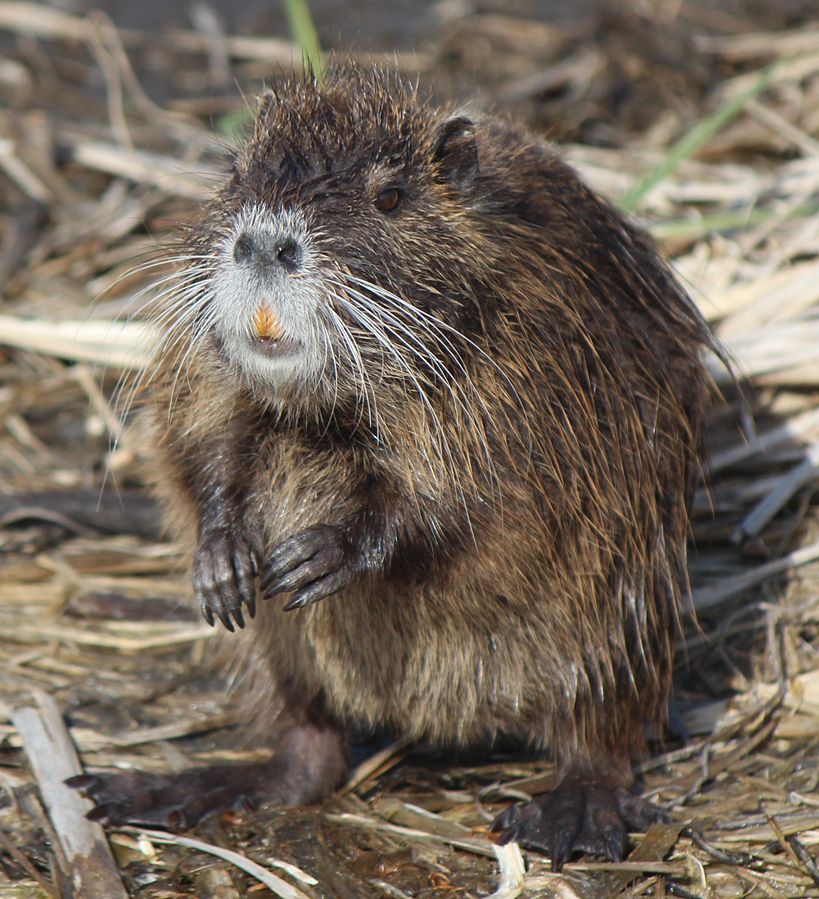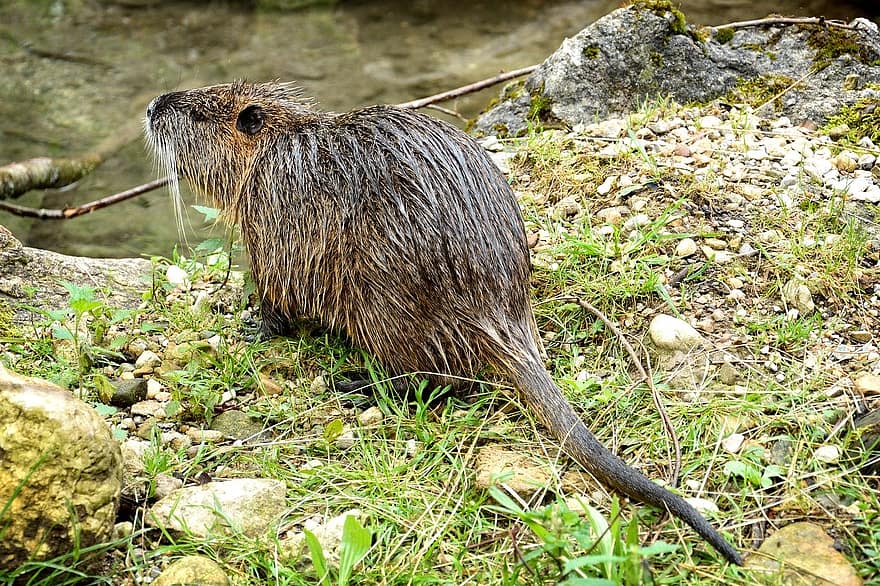Nutria

Nutria
(Myocastor coypus)
Tags: Aquatic | Terrestrial
Identification and Reproduction
Identification:
- The nutria, also known as river rat, is a semi-aquatic rodent.
- They have coarse dark brown fur and a white muzzle and long white whiskers.
- Hind feet are webbed.
- They also have bright orange incisor teeth.
- Body length ranges from 0.4-0.6 m long (without tail).
- Their tail is about 30-45 cm long and round.
Reproduction:
- Female nutrias give birth to a litter of 1-3 offspring.
- They are capable of having 3 litters a year.
- Young mature very quickly and only remain with their mothers for the first month or two.
Habitat & Ecology
- Nutria rarely exceed the age of three.
- Typically found in freshwater marshes, wetlands, slow-moving streams and sloughs.
- They may also habitat in brackish habitats.
- Prefers a semi-aquatic environment where there is an abundance of aquatic vegetation.
- They eat vegetation, roots as well as small crustaceans, frogs and fish.
- They can remain submerged under water for five minutes.
Impacts
- They threaten wetland habitats, agricultural crops and infrastructure by feeding destructively and burrowing.
- They alter wetlands and marshes by turning them into open waters by consuming surrounding biomass.
- They feed on rhizomes and young shoots causing the plant communities to diminish.
- Nutria also cause feeding damage to agricultural crops such as vegetables, berries, corn and alfalfa.
- Their burrowing behaviour will increase erosion.
- Nutrias have also been observed to disrupt and chew through irrigation systems.
- These rodents are hosts to diseases and pathogens that not only impact other animals but also humans.
Management
- If you have seen a nutria, please report it (include picture and location if possible).
- Manage and control vegetation around fences and gardens to discourage nutria.
Resources
Download the BC Prohibited Species Alert for Nutria (Myocastor coypus) here.
For more information refer to the Global Invasive Species Database fact sheet on Myocastor coypus here.
Header photo (Norbert Nagel).




